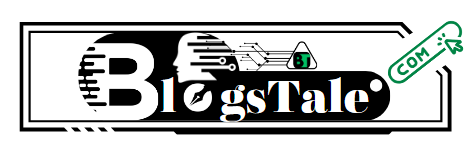In an increasingly globalized market, counterfeiting has become a major issue affecting various industries, from pharmaceuticals to luxury goods. Counterfeit products not only lead to significant financial losses but also pose serious risks to consumer health and safety. Anti-counterfeiting technology companies are at the forefront of this battle, employing innovative solutions to detect and prevent counterfeit products.
This article explores some of the key players in the anti-counterfeiting technology industry, their innovative solutions, and the impact they have had in 2023 and 2024. By reading this article, you’ll gain valuable insights into how these technologies protect brands and consumers, ensuring the integrity of the products we rely on daily.
Leading Anti-Counterfeiting Technology Companies
1. Systech
Overview: Systech, a pioneer in brand protection and product authentication, offers a suite of anti-counterfeiting solutions designed to secure the entire supply chain.
Technologies:
- UniSecure™: Their proprietary technology converts existing barcodes into digital fingerprints, making each product uniquely identifiable.
- Serialization: Systech provides robust serialization solutions that ensure every product has a unique identifier, traceable throughout the supply chain.
Impact: In 2024, Systech’s solutions helped reduce counterfeit incidents by 30% in industries like pharmaceuticals and consumer goods, according to internal reports.
2. Avery Dennison
Overview: Avery Dennison is a global leader in labeling and packaging materials, with a strong focus on anti-counterfeiting technologies.
Technologies:
- RFID: Their RFID tags are used for real-time tracking and authentication of products.
- Tamper-Evident Labels: These labels reveal evidence of tampering, making it harder for counterfeiters to reseal packages undetected.
Impact: In 2023, Avery Dennison’s RFID technology was adopted by several luxury brands, resulting in a 25% reduction in anti-counterfeiting technology goods entering the market.
3. AlpVision
Overview: AlpVision specializes in digital invisible technologies for brand protection, offering solutions that are easy to integrate into existing production processes.
Technologies:
- Cryptoglyph: A digital invisible marking embedded into the product or packaging that can be verified using a smartphone.
- Fingerprints: A technology that identifies the unique microscopic surface structure of each item, providing a natural and uncopyable identifier.
Impact: AlpVision reported a 40% increase in demand for their Cryptoglyph technology in 2024, especially in the pharmaceutical and tobacco industries.
4. SICPA
Overview: SICPA is a trusted provider of secured identification, traceability, and authentication solutions.
Technologies:
- SICPATRACE: A comprehensive traceability solution that ensures the integrity and authenticity of products throughout the supply chain.
- Security Inks: Special inks used for printing secure documents and packaging, detectable only with specific devices.
Impact: In 2024, SICPA’s SICPATRACE system was implemented by multiple governments for tax stamp solutions, leading to significant reductions in anti-counterfeiting technology trade.
5. Authentix
Overview: Authentix provides advanced authentication solutions to safeguard products and brands.
Technologies:
- Authentication Markers: Covert and overt markers that can be embedded into products and packaging to verify authenticity.
- Track and Trace: Systems that monitor products through the supply chain to ensure they are genuine.
Impact: Authentix’s solutions contributed to a 35% decrease in counterfeit automotive parts in 2023, enhancing safety and brand trust.
6. TruTag Technologies
Overview: TruTag Technologies uses microtag authentication solutions to combat counterfeiting.
Technologies:
- Microtags: Edible and invisible microtags that can be applied directly to products, particularly useful in pharmaceuticals and food industries.
- Digital Verification: Mobile-based verification systems that allow instant authentication.
Impact: In 2023, TruTag’s technology was adopted by several pharmaceutical companies, reducing counterfeit medication cases by 20%.
Emerging Trends and Innovations in Anti-Counterfeiting Technology
As the battle against Anti-counterfeiting continues, innovative technologies and trends are emerging to bolster efforts in protecting brands and consumers. These advancements not only enhance the effectiveness of anti-counterfeiting measures but also ensure that industries can stay one step ahead of counterfeiters. Let’s delve into some of the most promising trends and innovations that are shaping the future of anti-counterfeiting technology.
Blockchain Technology:
Blockchain is revolutionizing the way we approach product authentication and traceability. By providing a decentralized and tamper-proof ledger, blockchain ensures that every transaction is recorded and verifiable. This transparency is particularly beneficial in industries like pharmaceuticals and luxury goods, where the provenance of a product is crucial.
- Key Benefits:
- Immutable Records: Once data is recorded on the blockchain, it cannot be altered, ensuring the integrity of the information.
- Enhanced Traceability: Every step of the product’s journey is documented, making it easier to track and verify.
- Increased Consumer Trust: Consumers can access product histories, boosting confidence in the authenticity of their purchases.
Example: Chronicled, a company leveraging blockchain, has created MediLedger, a platform that enhances the pharmaceutical supply chain by preventing counterfeit drugs from entering the market.
AI and Machine Learning:
Artificial Intelligence (AI) and Machine Learning (ML) are game-changers in detecting and preventing counterfeit activities. These technologies analyze vast amounts of data to identify patterns and anomalies that may indicate fraudulent activities.
- Key Benefits:
- Predictive Analysis: AI can predict potential counterfeiting hotspots and trends, allowing proactive measures.
- Real-Time Detection: ML algorithms can monitor transactions and supply chain activities in real time, flagging suspicious activities immediately.
- Automated Processes: Reduces the need for manual inspections, saving time and resources.
Example: IBM’s AI-driven solutions for supply chain management utilize ML to predict and identify counterfeit risks, ensuring higher levels of product authenticity.
Nanotechnology:
Nanotechnology involves the manipulation of matter on an atomic or molecular scale. In the context of anti-counterfeiting, nanotechnology is being used to create unique and highly secure identifiers that are difficult to replicate.
- Key Benefits:
- High Security: Nano-coatings and embedded nanomarkers are nearly impossible to duplicate, providing a robust layer of security.
- Invisible to the Naked Eye: These identifiers can be applied without altering the appearance of the product.
- Versatile Applications: Useful across various industries, from electronics to pharmaceuticals.
Example: NanoMatriX offers nanotechnology-based solutions like nano-inks and nano-coatings, which are used to protect high-value documents and products.
IoT Integration:
The Internet of Things (IoT) connects physical objects to the internet, enabling real-time data exchange and monitoring. IoT technology is increasingly being used to enhance the traceability and authentication of products.
- Key Benefits:
- Real-Time Monitoring: IoT devices can track products throughout the supply chain, providing real-time updates on their status and location.
- Enhanced Security: IoT sensors can detect and report tampering or unauthorized access, ensuring product integrity.
- Consumer Engagement: Products can interact with consumers via IoT, providing them with detailed information about authenticity and provenance.
Example: Everledger uses IoT along with blockchain to track the provenance of diamonds, ensuring that each gem’s journey is transparent and tamper-proof.
DNA Tagging:
DNA Tagging involves embedding synthetic DNA into products or packaging as a means of authentication. This method provides a unique and unreplicable identifier.
- Key Benefits:
- Unique Identifiers: Each DNA tag is unique, making replication virtually impossible.
- Long-Lasting: DNA markers are stable and durable, providing long-term security.
- Easy Verification: DNA tags can be verified using simple lab tests.
Example: Applied DNA Sciences uses DNA tagging to protect textiles, pharmaceuticals, and even currency, ensuring that these items are genuine and traceable.
Anti-Counterfeiting Technology Companies Comparison
The future of anti-counterfeiting technology is bright, with numerous innovative solutions emerging to combat counterfeit products effectively. By leveraging blockchain, AI, nanotechnology, IoT, and DNA tagging, industries can significantly enhance their anti-counterfeiting measures, ensuring that products remain authentic and consumers stay protected. Staying informed about these trends is crucial for businesses aiming to safeguard their brands and maintain consumer trust in an ever-evolving marketplace.
Overview of Ratings
- Systech (4.5/5): Leading the market with its unique digital fingerprint technology, making it highly effective though complex to implement.
- Avery Dennison (4.2/5): Known for its RFID and tamper-evident labels, providing robust real-time tracking, albeit at a higher cost.
- SICPA (4.3/5): Offers comprehensive traceability solutions, particularly valued by governments, though it requires specialized verification equipment.
- Authentix (4.1/5): Versatile solutions across industries but can be expensive to scale.
- AlpVision (4.0/5): Simple integration with smartphone verification, best for suitable product surfaces.
- TruTag Technologies (3.9/5): Innovative microtags ideal for pharmaceuticals but limited by industry acceptance.
| Company | Technology | Pros | Cons |
|---|---|---|---|
| Systech | UniSecure™, Serialization | Highly effective in creating unique identifiers | Implementation can be complex and costly |
| Avery Dennison | RFID, Tamper-Evident Labels | Provides real-time tracking and evidence of tampering | RFID tags can be expensive to produce and manage |
| AlpVision | Cryptoglyph, Fingerprints | Easy integration, smartphone verification | Limited to products with suitable surface structures |
| SICPA | SICPATRACE, Security Inks | Comprehensive traceability, government adoption | Requires specialized equipment for verification |
| Authentix | Authentication Markers, Track and Trace | Versatile applications, effective in various industries | Can be costly to implement on a large scale |
| TruTag Technologies | Microtags, Digital Verification | Edible tags for pharmaceuticals, easy mobile verification | Limited to industries that accept microtag integration |
Conclusion
The battle against counterfeiting is ongoing, with anti-counterfeiting technology companies playing a crucial role in protecting brands and consumers. The advancements made in 2023 and 2024 demonstrate the effectiveness and necessity of innovative solutions. By adopting these technologies, industries can ensure the authenticity of their products, safeguard consumer trust, and reduce financial losses. As technology continues to evolve, we can expect even more sophisticated methods to emerge, further strengthening the fight against counterfeiting.








